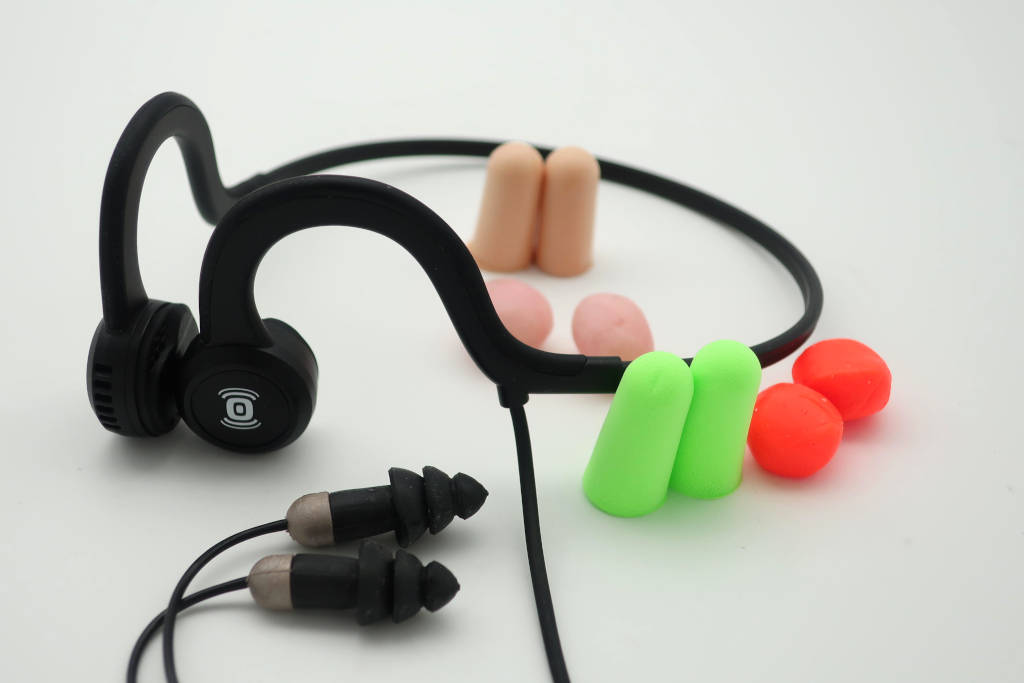
Runners and cyclists use bone conduction headphones because they want to keep their ears open and maintain awareness of what is going on around them.
Used this way, bone conduction headphones are not suitable for very loud environments because the louder the environmental noise, the more it drowns out the headphones.
But what if you use earplugs to block loud noise? Can you hear bone conduction headphones with plugged ears?
The answer is yes. Bone conduction headphones work with earplugs.
Depending on the type of earplug you use—foam, reusable, wax or silicone putty—the headphones’ sound character (and volume) changes.
I would say they sound better with earplugs than without. They certainly have more bass.
However, while bone conduction headphones are supposed to bypass the outer ear, certain frequencies you usually hear through the open ear are attenuated if you plug your ears, giving the headphones a bit of an “underwater sound” character.
You get more bass but less mid-frequencies.
You can compensate for this by using your phone’s equalizer function.
Some bone conduction headphones, such as many Aftershokz models, also have a built-in “earplug equalizer setting.”
Please note though, even equalized, bone conduction headphones sound different from other headphones and in-ears.
I have tested the Aftershokz Sportz Titanium with 5 different earplugs and here are my observations:
Bone conduction headphones with foam earplugs (Moldex Purafit and a pair of no-name foamies)
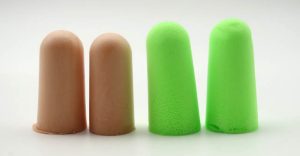
The headphones sound relatively balanced but, as mentioned, they lack somewhat in the mid-frequencies (even after equalization with my phone). Bass is stronger compared to when using them without earplugs.
Overall, I definitely get fun out of this combination, and often use the Aftershokz for watching YouTube while wearing foam earplugs (such as in the evening before going to sleep).
How does this work under loud noise?
I have tried them against a lawn mower and a metal saw with measured sound levels of 95 to 97 dBA.
The Moldex Purafit blocked substantially more noise for me than the no-name earplugs and allowed me to hear both music and podcasts played through the headphones quite well in this high noise environment.
The no-name plugs worked OK but because they blocked less lawn mower noise, it was more difficult to hear music and audiobooks.
These weren’t bad earplugs. They just didn’t fit me as well as the Moldex.
Lesson learned
Make sure your earplugs properly seal your ear canal to protect your hearing. This is paramount.
If the headphones appear to be drowned out by external noise when you are wearing foam earplugs, this could mean you are not protected well because:
- Your earplugs don’t fit well and hence don’t block enough noise. Refit your earplugs or try a different earplug.
- The noise level is too high for the type of earplugs you are using. Try a higher-rated earplug.
- The noise level is just too high.
If you haven’t found your favorite foam earplugs yet, read this comparative review of foam earplugs.
If you have a small ear canal and find most foam earplugs too large, please check this review of my favorite earplugs for small ears.
Important
- Ask your employer/company’s safety personnel whether the use of bone conduction headphones is actually permitted in your workplace.
- Listening to sound with your ears plugged can significantly interfere with your ability to hear warning signals. Don’t use headphones where you have to hear such signals.
- Playing bone conduction headphones too loud can damage hearing in the same way as other headphones. If external noise appears to be drowning out the headphones when played at a normal volume, I would stop listening to music instead of increasing the volume to the max.
Second I tried them together with the reusable NRR 27 Flents Protechs Music
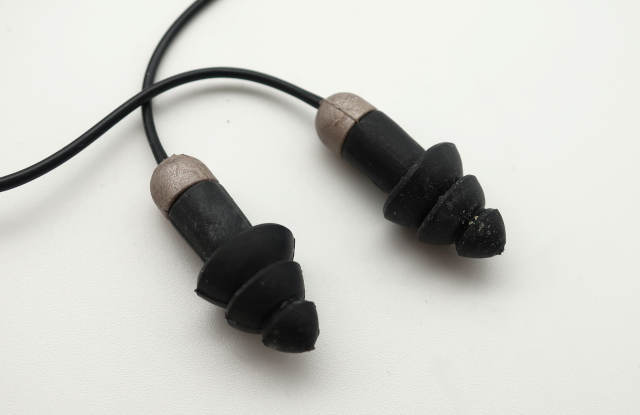
Overall, the headphones sounded better with the reusable Protechs Music, and they also got perhaps a bit louder.
I used them to watch YouTube videos while riding a gym bike.
This worked very well.
Sweat is no problem for these headphones and the earplugs blocked external noise well so that I was able to listen at a low volume.
What surprised me was how these reusable earplugs block sound: subjectively, they reduce low frequency noise very well, and more so than mid frequency noise.
They reduced the noise substantially but I didn’t get a “muffled kind of feeling.”
Third I tried them with Ohropax wax earplugs and Mack’s silicone putty earplugs
![]()
With these moldable earplugs the headphones were the loudest and lost the least of the mid frequencies. However, they sounded somewhat boomy.
This isn’t really surprising because soft moldable earplugs, when used correctly, only seal the ear canal entrance.
This leads to an occlusion effect: body generated sounds like chewing or your own voice (and bone conduction headphones) get amplified in the ear canal and—sound boomy.
Compared to when using them with foam and reusable earplugs, I had to substantially lower the volume.
However, using my phone’s equalizer I was able to reduce excessive bass.
All in all, bone conduction headphones work quite well together with wax or silicone earplugs.
Compared to foam, wax and silicone putty earplugs have a low noise reduction rating, but many people use them to take the sting out of everyday noise and reduce distractions.
How do bone conduction headphones + earplugs compare to noise-isolating in-ears and Bluetooth earmuffs?
Compared to in-ear noise isolating earphones
The unique benefit of using bone conduction headphones together with earplugs is that you get to choose the earplug that fits you best and suits your noise reduction requirements.
This could be an NRR 22 wax earplug, an NRR 27 reusable earplug, or an NRR 33 foam earplug.
Some in-ear noise isolating earphones have a noise reduction rating, so they can be used as a hearing protector (if permitted at your workplace).
However, in-ears come with a limited selection of ear tips. If none of the ear-tips fits well or you find them uncomfortable, you might have to choose an entirely different model or get custom-molded earphones.
In addition, while these ear tips last for quite a while, you will eventually have to replace them as well.
But, high-quality in-ears (not necessarily the cheapest work phones) sound a lot better than bone conduction headphones.
The bone conduction headphones I have tried sound decent, but I would not call them high fidelity.
They work well for easy listening and audiobooks.
With some instrumental music they sound really interesting. The music seems to be coming from a different galaxy.
Compared to Bluetooth earmuffs
Hearing protection earmuffs with built-in headphones consistently reduce noise (it is easier to get the fit right than with earplugs). They are easy to put on and take off.
I compared the bone conduction headphones+Moldex earplug combination and the Worktunes Connect earmuffs against the lawn mower:
I prefer the Worktunes. Speech frequencies sound fuller; these earmuff headphones seem to be better optimized for lawn mowing.
But earmuffs get sweaty and you have to put up with the pressure caused by the ear cups and the headband.
Some people choose earplugs because they can’t get used to earmuffs (and vice versa).
If you are an earplug person, you don’t have to switch to earmuffs just to listen to your tunes. Bone conduction headphones fit right in here.
Furthermore, not all safety glasses work well with earmuffs.
Other interesting uses
Are you wearing earplugs at the gym, on public transport, while vacuuming, or in a coffee shop because your environment is too loud?
You can keep using your favorite earplugs and listen to your audio books and music via bone conduction headphones.
And, these headphones, together with earplugs, are also a compact and very effective tool to block noise when studying or working in an office: Reduce noise with foam earplugs and mask the remainder with white noise played through bone conduction headphones.
For more information on the model used in this test, read my review of the Aftershokz Sportz Titanium.

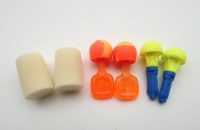
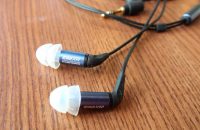

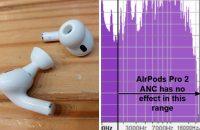
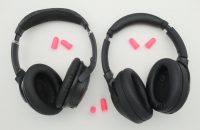
![Moldex Pura-Fit vs SparkPlugs [Noise Reduction and Comfort Test] Moldex Pura-Fit vs SparkPlugs [Noise Reduction and Comfort Test]](https://noisyworld.org/wp-content/uploads/2021/06/moldex-pura-fit-vs-sparkplugs-test-200x130.jpg)
Has anyone tested using the bone conduction earphones with ear plug combination while sleeping in order to cancel out partner’s snoring? There are earpieces on the market but the pink noise is distracting and kept my partner from falling asleep.
Hello Namleg,
If I understand you right, your earphones are leaking sound and disturbing your (snoring?) partner.
Unfortunately bone conduction headphones also leak some sound, even somewhat more than many in-ear headphones.
Perhaps you could convince your partner to also wear earplugs? Then both of you would contribute.
If they don’t like foam, wax or silicone putty could also work to block the leaking pink noise.
All the best.